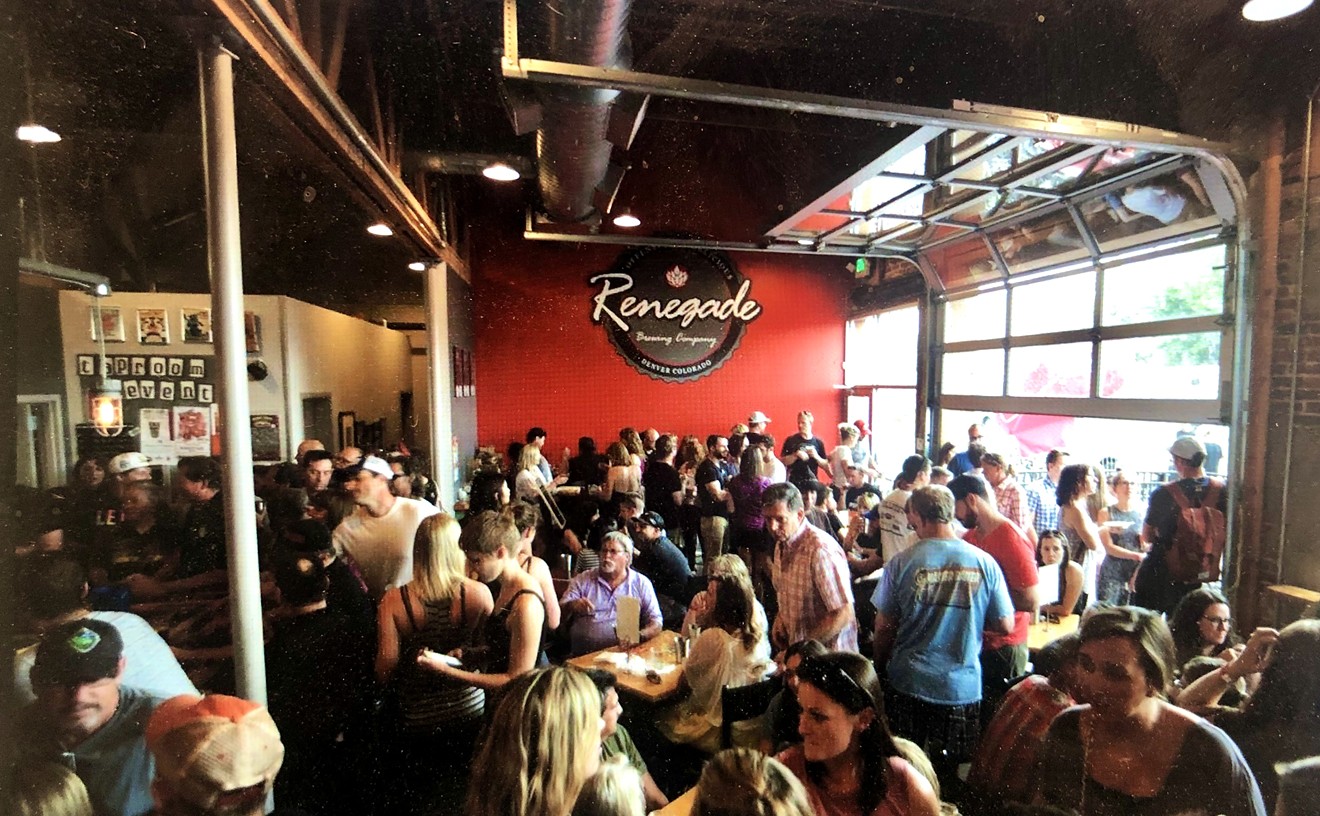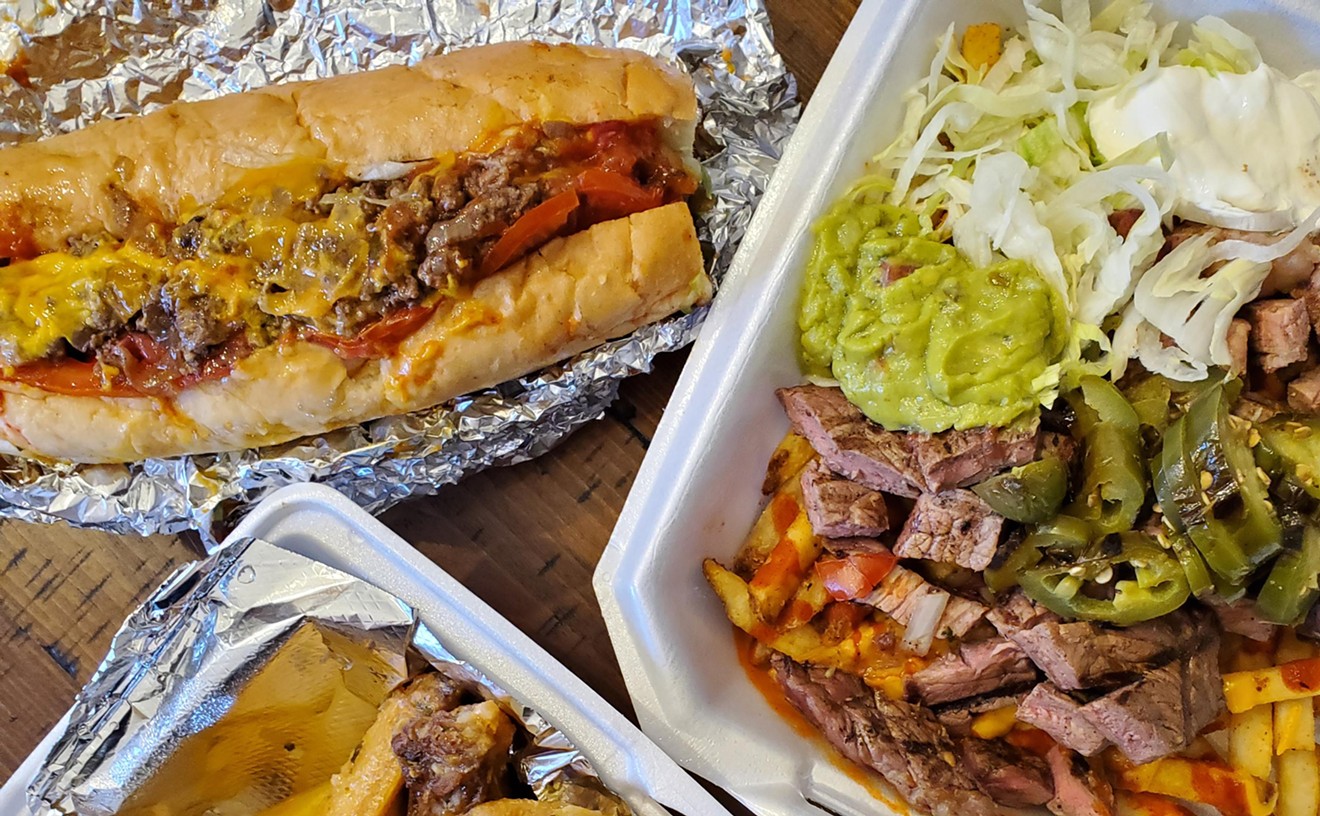Often they're fighting not just fear of the unknown, but stubborn misconceptions about a certain country's cuisine. For example, people assume that the food at Golden Europe, a German-Czechoslovakian-Polish-Hungarian kind of place, will be heavy, heavy, heavy. But it's not. "We call it 'ethnic European,'" says Joseph Palla Sr., who owns the restaurant with his wife, Emilie. "There's a little bit of everything, but we have people who are always surprised that it's not just dumplings and Wiener schnitzel. But Denver doesn't eat like everywhere else, either."
They certainly eat differently in Chicago, where the Palla family--Joe Sr., Emilie, son Joe Jr. and daughter Emilie ("We call her 'Emilie Jr.,'" Joe Sr. says. "It made coming up with names much easier")--landed after leaving their native Czechoslovakia. They ran a restaurant in the Windy City from 1980 until 1994, when they finally decided to try a location with better winters.
It took them until September of last year to fina-lize the deal on Golden Europe, which is located in a modest-sized, sparsely decorated space in Arvada. "In Chicago, [business] was steady year-round," Joe Sr. says. "And we got a lot of the people who ate this food in their countries. Here we get some, but not as many. And it seems like Coloradans are too busy outside when the weather is nice."
The Pallas have part of that problem figured out: They've just built a patio, which they plan to transform into a biergarten for Oktoberfest. Still, much of the food the kitchen turns out seems better suited to cold weather than al fresco dining. Who craves breaded pork tenderloin with potato dumplings and red cabbage in 95-degree weather?
Well, after discovering Golden Europe, I do. Emilie Sr. does all the cooking, and she somehow manages to lighten dishes that traditionally are heavy-going. This is no small achievement, considering that just about everything on the menu is described as being breaded, stuffed and fried, or breaded and fried, or stuffed and fried. And the few exceptions, such as the goulash soup ($1.95), contain potatoes or some other starch. But this soup, one of several the kitchen rotates daily, was so flavorful, it was easy to ignore the fact that it was filling as heck; the paprika-dyed stock was teeming with beef, celery, carrots and potatoes. Our other starter, the potato pancakes ($4.95 for four), were heavenly crosses between the mashed version and the grated latke style, fried to a perfect golden outside and steaming hot inside.
After all that, we thought there was no way we could eat more than a bite or two of our entrees. But Emilie Sr.'s cooking skill made the generous portions go down easily. Her breaded pork baby-back ribs ($10.95) encased tender, juicy meat in a thin but solid breading that had been cooked into a greaseless, crunchy shell. The side of thick-cut, soft-centered French fries was almost more than we could handle, but we regained our strength while plowing through a pile of simple steamed green beans. Less weighty was the chicken paprika ($8.95), a dish of beautifully roasted chicken parts dredged in ground sweet red pepper. This came with Emilie's buttery spaetzle, which was further wet down by the spice-laden sauce oozing from the chicken.
On our second trip to Golden Europe, we again ordered the potato pancakes and found them just as delightful as the first batch had been. By now we were feeling adventurous, and we made the mistake of ordering two combination plates--either one of which could have served two quite comfortably. The German plate ($15.95) held a quarter of a roasted duckling, two slices of roast pork loin, a piece of Wiener schnitzel the size of a Volkswagen headlight, two slices of bread dumplings, and a side of sauerkraut. With the exception of the schnitzel, which was too much chewy meat in too much bland breading, the meat offerings were well-seasoned, light on the breadcrumbs and nicely cooked. The pork loin featured a thin layer of breading around tender medallions. The duckling was particularly good; sprinkled with simple seasoning salt and pepper, it had been oven-toasted until it was crisp-skinned and juicy but not greasy. The bread dumplings tasted like the standard doughy wads, even if they looked a little different: Golden Europe takes the traditional dumpling dough and shapes it like a loaf before slicing and cooking. The result confuses many diners; Joe Sr. says people frequently mistake it for bread and ask for butter. The real standout, though, was the sauerkraut: Studded with caraway seeds and fermented to a tacky, wet mass, this cabbage dish was sauer, all right, but agreeably so.
The red cabbage on the Moravian plate ($13.95) was another story. The bright purple glop was so sweet it was almost like eating candied cabbage. Although the taste could be cloying, it provided a welcome break from more roast loin of pork and a breaded pork tenderloin that was barely distinguishable from the Wiener schnitzel. The sliced bread dumplings reappeared here, too. But the star of this combo was the breaded cauliflower. Little puffballs of thin, deep-fried batter surrounded pieces of fresh cauliflower, which had been steamed inside the doughy packages into the most interesting possible presentation of this boring vegetable.
We gave up early on the platters to save room for the homemade desserts. Good move. The apricot-filled kolachke ($1), a yeast bun that both Poland and Czechoslovakia claim to have created, was so sticky-sweet and wonderfully textured that I could have ordered twenty more for breakfast. The apple strudel ($1.50) was less sweet but just as delicious, and obviously freshly made.
From Golden Europe we headed across town and halfway around the world, to Lanie's Philippine Kitchenette. The second Filipino restaurant to pop up in the area--Nipa Hut, also in Aurora, has been around for two years--Lanie's was opened late last year by Lanie Piezza, a tiny, exuberant woman who is capable of talking even the most timid into trying dishes with only vaguely appealing descriptions. We listened as she cheerfully egged on other diners, then sampled several recommended items. Crispy pata ($10.95), described on the menu as "deep-fried pork hocks with homemade Philippine sauce," turned out to be a tasty stew of crumbly-edged pig ankles swathed in a salty, concentrated gravy. If we had any consistent complaints with Lanie's, it was that the kitchen often went heavy on the salt--but the seasoning worked with this dish. Too much soy sauce ruined our order of adobo pork ($4.95), butter-textured meat drowning in a vinegary liquid loaded with sodium. By comparison, the preparation of kangkong with shrimp and rice ($5.25) was downright spartan; the spinach-like green had been simply sauteed with the shrimp in a slightly spicy sauce.
Lanie's also tucks a market into its small space in a large shopping plaza, and on our second visit we found it difficult to pull ourselves away from this bizarre bazaar. While Lanie's eatery portion is brightly lit and antiseptic-looking, the market is a colorful mishmash of sequined nightclub attire, dishes, utensils, frozen fish, a million brands of imported pork rinds and cheap sugar-water confections from every Asian country you can think of, all bordered by a display case full of who knows what.
But the smell of cooking foods soon pulled us back into the eating area, where once again we succumbed to Lanie's suggestions. The combination ampalaya ($6.25) brought a dish of exquisitely cooked eggplant, tomatoes and bitter melon, a genuinely bitter cucumber-like fruit also known as a balsam pear. The combination sitaw ($6.25) was an addictive combination of super-soft Chinese long beans stir-fried with shrimp, pork, chicken and beef in a dense brown sauce.
We ended this culinary trip with Lanie's exotic desserts: Filipino ice creams made with corn, jackfruit and avocado ($1.75). Although all three were interesting, only the avocado delicacy was truly delicious--if not exactly out of this world.
But when eating adventures like these await, it's worth wandering into someone else's neighborhood.










